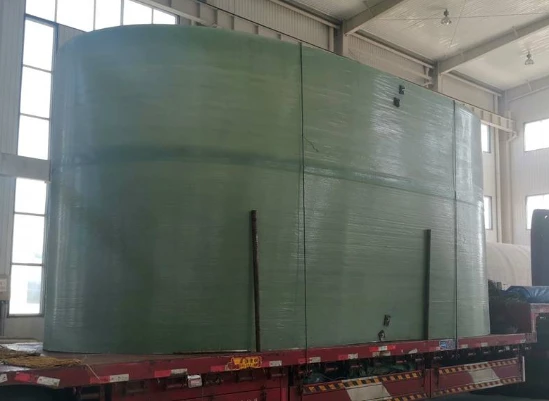
-
 Afrikaans
Afrikaans -
 Albanian
Albanian -
 Amharic
Amharic -
 Arabic
Arabic -
 Armenian
Armenian -
 Azerbaijani
Azerbaijani -
 Basque
Basque -
 Belarusian
Belarusian -
 Bengali
Bengali -
 Bosnian
Bosnian -
 Bulgarian
Bulgarian -
 Catalan
Catalan -
 Cebuano
Cebuano -
 China
China -
 China (Taiwan)
China (Taiwan) -
 Corsican
Corsican -
 Croatian
Croatian -
 Czech
Czech -
 Danish
Danish -
 Dutch
Dutch -
 English
English -
 Esperanto
Esperanto -
 Estonian
Estonian -
 Finnish
Finnish -
 French
French -
 Frisian
Frisian -
 Galician
Galician -
 Georgian
Georgian -
 German
German -
 Greek
Greek -
 Gujarati
Gujarati -
 Haitian Creole
Haitian Creole -
 hausa
hausa -
 hawaiian
hawaiian -
 Hebrew
Hebrew -
 Hindi
Hindi -
 Miao
Miao -
 Hungarian
Hungarian -
 Icelandic
Icelandic -
 igbo
igbo -
 Indonesian
Indonesian -
 irish
irish -
 Italian
Italian -
 Japanese
Japanese -
 Javanese
Javanese -
 Kannada
Kannada -
 kazakh
kazakh -
 Khmer
Khmer -
 Rwandese
Rwandese -
 Korean
Korean -
 Kurdish
Kurdish -
 Kyrgyz
Kyrgyz -
 Lao
Lao -
 Latin
Latin -
 Latvian
Latvian -
 Lithuanian
Lithuanian -
 Luxembourgish
Luxembourgish -
 Macedonian
Macedonian -
 Malgashi
Malgashi -
 Malay
Malay -
 Malayalam
Malayalam -
 Maltese
Maltese -
 Maori
Maori -
 Marathi
Marathi -
 Mongolian
Mongolian -
 Myanmar
Myanmar -
 Nepali
Nepali -
 Norwegian
Norwegian -
 Norwegian
Norwegian -
 Occitan
Occitan -
 Pashto
Pashto -
 Persian
Persian -
 Polish
Polish -
 Portuguese
Portuguese -
 Punjabi
Punjabi -
 Romanian
Romanian -
 Russian
Russian -
 Samoan
Samoan -
 Scottish Gaelic
Scottish Gaelic -
 Serbian
Serbian -
 Sesotho
Sesotho -
 Shona
Shona -
 Sindhi
Sindhi -
 Sinhala
Sinhala -
 Slovak
Slovak -
 Slovenian
Slovenian -
 Somali
Somali -
 Spanish
Spanish -
 Sundanese
Sundanese -
 Swahili
Swahili -
 Swedish
Swedish -
 Tagalog
Tagalog -
 Tajik
Tajik -
 Tamil
Tamil -
 Tatar
Tatar -
 Telugu
Telugu -
 Thai
Thai -
 Turkish
Turkish -
 Turkmen
Turkmen -
 Ukrainian
Ukrainian -
 Urdu
Urdu -
 Uighur
Uighur -
 Uzbek
Uzbek -
 Vietnamese
Vietnamese -
 Welsh
Welsh -
 Bantu
Bantu -
 Yiddish
Yiddish -
 Yoruba
Yoruba -
 Zulu
Zulu
high pressure fiberglass pipe
High Pressure Fiberglass Pipe An Overview
In recent years, the demand for high-pressure fiberglass pipes has surged due to their numerous advantages over traditional piping systems. Fiberglass pipe, also known as glass-reinforced plastic (GRP) pipe, is revolutionizing industries that require robust and reliable material for fluid transport, especially in high-pressure applications. This article delves into the characteristics, advantages, applications, and future outlook of high-pressure fiberglass pipes.
Characteristics of High-Pressure Fiberglass Pipe
High-pressure fiberglass pipes are composed of a reinforced plastic matrix, typically using glass fibers for strength and resilience. These pipes can withstand internal pressures exceeding 500 psi, making them suitable for various applications. The manufacturing process involves combining fibers with a thermosetting resin, which is then molded into pipes of different diameters and lengths. The result is a pipe that is both lightweight and exceptionally strong.
One of the most significant characteristics of fiberglass pipes is their resistance to corrosion. Unlike traditional materials such as steel or iron, fiberglass does not rust or corrode when exposed to aggressive chemicals or environmental elements. This quality enhances the longevity of fiberglass pipes, making them a cost-effective solution over time.
Advantages of High-Pressure Fiberglass Pipe
The advantages of using high-pressure fiberglass pipe are multifaceted. First and foremost is its resistance to corrosion, which results in lower maintenance costs. Businesses can save significantly on repairs and replacements compared to conventional piping systems susceptible to wear and tear.
Furthermore, high-pressure fiberglass pipes are considerably lighter than their metallic counterparts. This lightweight feature facilitates easier handling and installation, reducing labor costs and project timelines. It also allows for flexibility during installation, enabling pipes to be laid in various configurations to suit specific needs.
Another remarkable benefit is the smooth interior surface of fiberglass pipes. This smoothness minimizes fluid friction, which results in reduced energy expenditures when pumping fluids through the system. Additionally, the non-stick surface helps to reduce the buildup of deposits, further enhancing flow efficiency.
high pressure fiberglass pipe

Applications of High-Pressure Fiberglass Pipe
High-pressure fiberglass pipes are used in various industries, including water treatment, chemical processing, oil and gas, and construction. In water treatment plants, these pipes are used for transporting water and wastewater due to their resistance to corrosion and ability to withstand different pressure levels.
In the chemical processing industry, fiberglass pipes are ideal for transporting caustic fluids and other hazardous materials. Their resistance to chemical reactions ensures safe and efficient transport, which is critical in maintaining plant safety and compliance with environmental regulations.
High-pressure fiberglass pipes have also found a significant role in the oil and gas industry. They are increasingly used for transporting crude oil and natural gas due to their lightweight nature and resistance to corrosive substances commonly encountered in these applications.
Furthermore, in construction, these pipes are used for drainage systems, irrigation, and cooling water applications. The versatility of fiberglass pipes allows for their adaptation in various projects, contributing to overall system efficiency and reliability.
Future Outlook
The future of high-pressure fiberglass pipes looks promising, driven by advancements in material science and increasing awareness of the benefits of composite materials. Research and development efforts are focused on enhancing the properties of fiberglass pipes, including improving their thermal and fire resistance, increasing their diameter range, and developing new resin systems that provide even greater chemical resistance.
Furthermore, the global shift toward sustainable and durable infrastructure solutions is likely to propel the adoption of high-pressure fiberglass pipes. As industries continue to seek out more efficient and eco-friendly alternatives, fiberglass pipes will be positioned to meet these demands.
In conclusion, high-pressure fiberglass pipes represent a cutting-edge solution for fluid transport in various industries. Their unique combination of strength, corrosion resistance, and lightweight nature make them an excellent choice for applications requiring reliability and efficiency. As technological developments continue, the future appears bright for high-pressure fiberglass piping systems, paving the way for innovation and enhanced infrastructure solutions.









